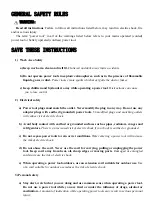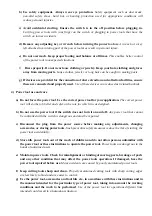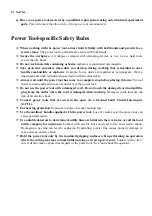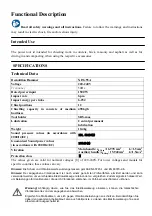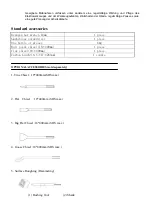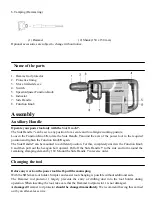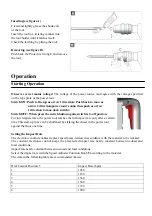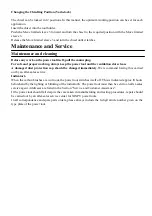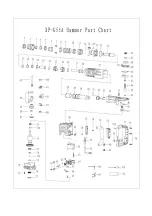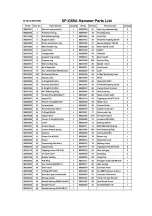
5) Service
a)
Have your power tool serviced by a qualified repair person using only identical replacement
parts. This will ensure that the safety of the power tool is maintained.
Power Tool-specific Safety Rules
When working with the power tool, always hold it firmly with both hands and provide foe a
secure stance.
The power tool is guided more secure with both hands.
Secure the workpiece.
A workpiece clamped with clamping devices or in a vice is held more
secure than by hand.
Do not work materials containing asbestos.
Asbestos is considered carcinogenic.
Take protective measures when dust can develop during working that is harmful to one’s
health, combustible or explosive.
Example: Some dusts are regarded as carcinogenic. Wear a
dust mask and work with dust/chip extraction when connectable.
Always wait until the power tool has come to a complete stop before placing it down.
The tool
insert can jam and lead to loss of control over the power tool.
Do not use the power tool with a damaged cord. Do not touch the damaged cord and pill the
plug from the outlet when the cord is damaged while working.
Damaged cords increase the
risk of an electric shock.
Connect power tools that are used in the open via a Ground Fault Circuit Interrupter
(GFCL).
Ear hearing protection.
Exposure to noise can cause hearing loss.
Use the auxiliary handle supplied with the power tool.
Loss of control over the power tool can
cause personal injury.
Use suitable detectors to determine of utility lines are hidden in the work area or call the local
utility company for assistance.
Contact with electric lines can lead to fire and electric shock.
Damaging a gas line can lead to explosion. Penetrating a water line causes property damage or
may cause an electric shock.
Hold the power tool only by the insulated gripping surfaces when performing an operation
where the cutting tool may contact hidden wiring or its own power cord.
Contact with a “live”
wire will also make exposed metal parts of the power tool “live” and shock the operator.


